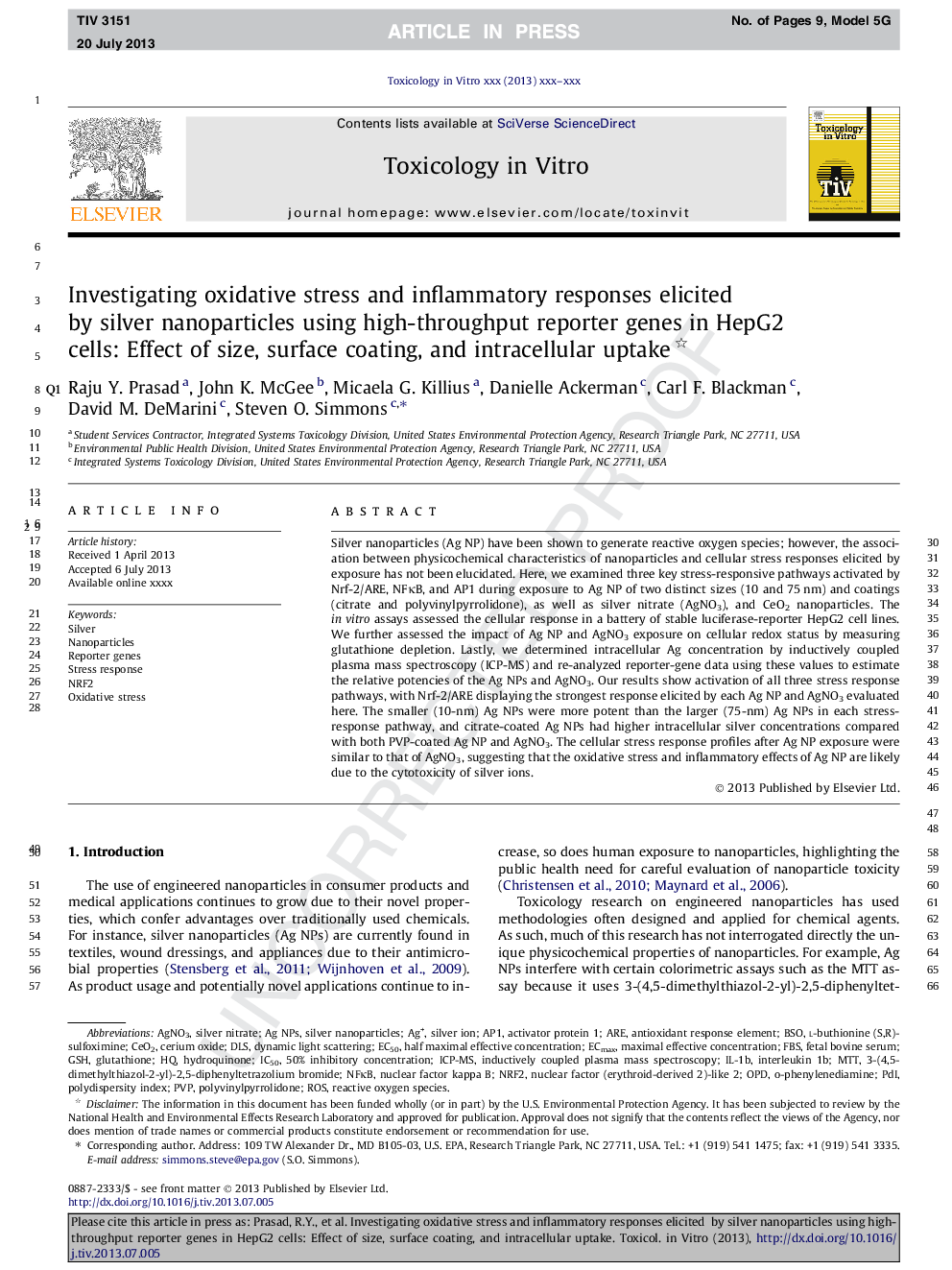| Article ID | Journal | Published Year | Pages | File Type |
|---|---|---|---|---|
| 5861773 | Toxicology in Vitro | 2013 | 9 Pages |
Abstract
Silver nanoparticles (Ag NP) have been shown to generate reactive oxygen species; however, the association between physicochemical characteristics of nanoparticles and cellular stress responses elicited by exposure has not been elucidated. Here, we examined three key stress-responsive pathways activated by Nrf-2/ARE, NFκB, and AP1 during exposure to Ag NP of two distinct sizes (10 and 75 nm) and coatings (citrate and polyvinylpyrrolidone), as well as silver nitrate (AgNO3), and CeO2 nanoparticles. The in vitro assays assessed the cellular response in a battery of stable luciferase-reporter HepG2 cell lines. We further assessed the impact of Ag NP and AgNO3 exposure on cellular redox status by measuring glutathione depletion. Lastly, we determined intracellular Ag concentration by inductively coupled plasma mass spectroscopy (ICP-MS) and re-analyzed reporter-gene data using these values to estimate the relative potencies of the Ag NPs and AgNO3. Our results show activation of all three stress response pathways, with Nrf-2/ARE displaying the strongest response elicited by each Ag NP and AgNO3 evaluated here. The smaller (10-nm) Ag NPs were more potent than the larger (75-nm) Ag NPs in each stress-response pathway, and citrate-coated Ag NPs had higher intracellular silver concentrations compared with both PVP-coated Ag NP and AgNO3. The cellular stress response profiles after Ag NP exposure were similar to that of AgNO3, suggesting that the oxidative stress and inflammatory effects of Ag NP are likely due to the cytotoxicity of silver ions.
Keywords
PDIl-buthionine (S,R)-sulfoximineAgNO3interleukin 1BAP1BSOEC50GSHNrf2IC50PVPFBSDLS3-(4,5-dimethylthiazol-2-yl)-2,5-diphenyltetrazolium bromide50% inhibitory concentrationIL-1bMTTNFκBAg NPso-PhenylenediamineROSopdAg+Cerium oxideCeO2Oxidative stressfetal bovine serumpolydispersity indexinductively coupled plasma mass spectroscopyICP-MSantioxidant response elementnuclear factor (erythroid-derived 2)-like 2nuclear factor kappa BNanoparticlesSilver nanoparticlesSilversilver nitratehalf maximal effective concentrationAREHydroquinoneStress responseDynamic Light Scatteringactivator protein 1polyvinylpyrrolidoneReporter genesGlutathioneReactive oxygen speciesSilver ion
Related Topics
Life Sciences
Environmental Science
Health, Toxicology and Mutagenesis
Authors
Raju Y. Prasad, John K. McGee, Micaela G. Killius, Danielle A. Suarez, Carl F. Blackman, David M. DeMarini, Steven O. Simmons,
